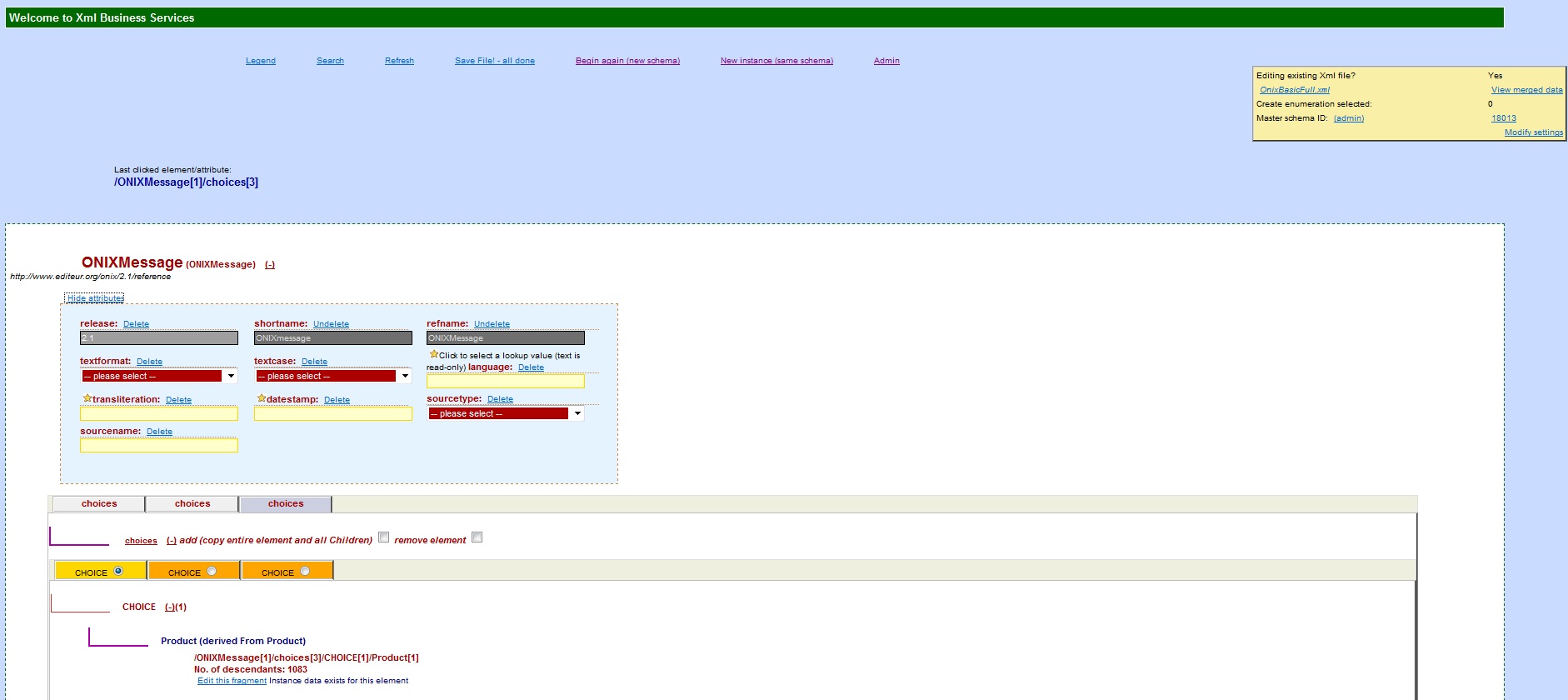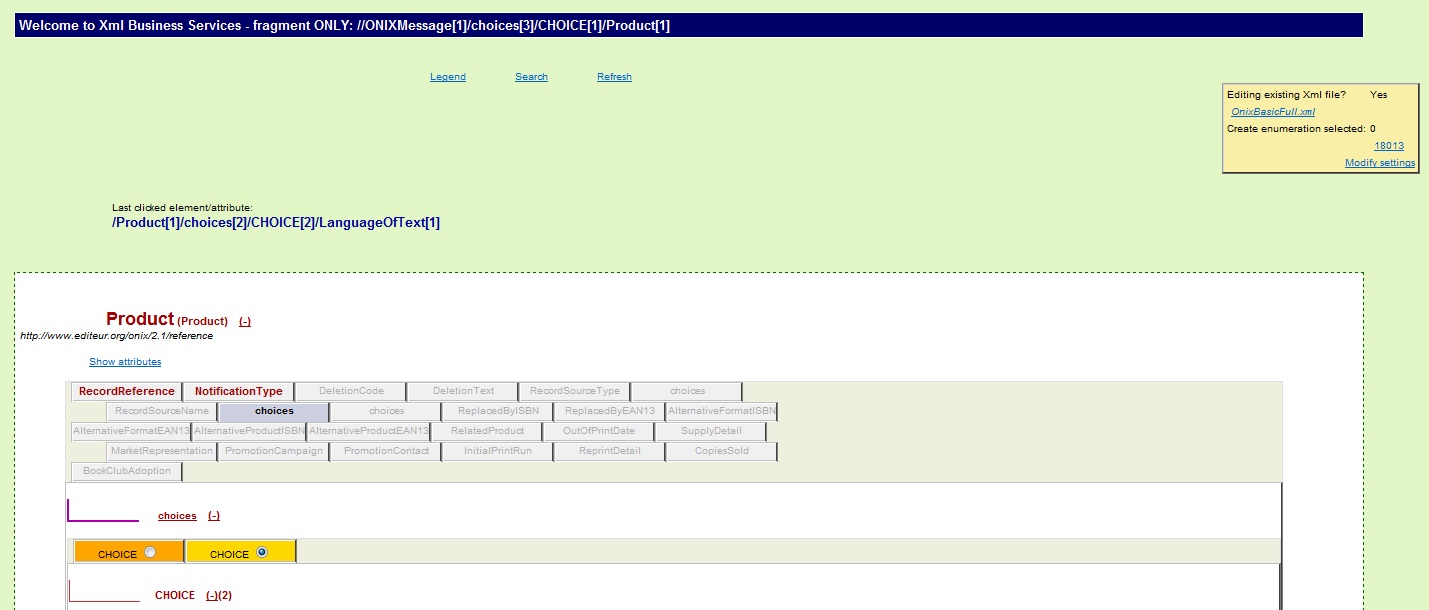XmlEdit is a web-based application that takes an Xml Schema file(s) and optionally a well-formed (of course!) and schema-valid xml instance and automatically renders a perfectly functional and usable html graphical user interface; that is it automatically creates a web application using the schema as the template and the xml instance as the data.
Given that Xml Schema is the pre-eminent templating mechanism behind xml files, and xml files are already the dominant accepted mechanism for exchanging data between different parties, that there is a niche that can be filled by this type of application seems to me to be self-evident.
The niche that this application is specifically targetted at is those suppliers who wish to engage in internet commerce (ie exchanging data via the net in xml form) that do not have the IT department available to support the extensive development that is a pre-requisite for this activity. Indeed it is quite possible that this solution is competent enough to rival even those that do.
This solution gives any user the advantage of agility. As back-end systems are inevitably tied to both a database and application code any change to a schema by a supplier will often require substantial modifications. By using XmlEdit no modfications would be required; the interface would adjust to the changed schema allowing a companies users to add and edit information uninterrputed.
Point of differentiation
There are other solutions of a similar nature. Principal amongst these is Microsoft Office’s InfoPath. Similar to XmlEdit its primary focus is on data entry. However whilst XmlEdit is code-free InfoPath requires a substantial amount of coding to get a usable form, especially with a schema of any complexity and some it just cannot handle at all. It is designed for relatively simple schemas in mind, not the often quite complicated schemas that seem to be a feature of B2B commerce. However by far the biggest difference between XmlEdit and any other automatic xml form generator on the market is the XmlEdit’s ability to load an instance document in the right places. To the best of my knowledge no other application even attempts this or, if it does it is as part of a customised schema-specific solution that a particular client has developed over the course of some months. XmlEdit gives a user the ability load a document, edit, save changes, send it to another supplier, get the instance back and continue editing.
Below is a screenshot to give you a general idea of how it renders;
Clicking on the Edit Fragment opens up a new browser window showing only the selected ‘arc’.



